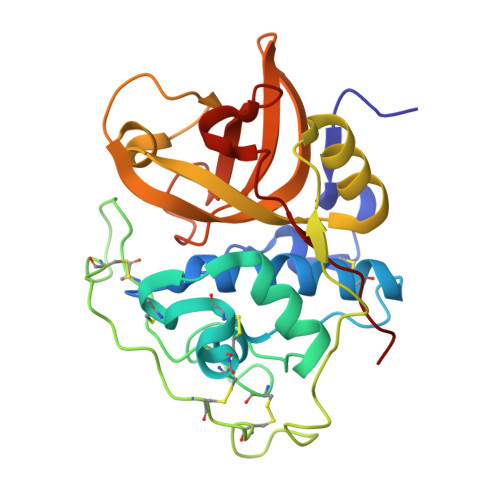Redirecting the Peptide Cleavage Causes Protease Inactivation.
Breuer, C., Kuppers, J., Schulz-Fincke, A.C., Heilos, A., Lemke, C., Spiwokova, P., Schmitz, J., Cremer, L., Frigole-Vivas, M., Lulsdorff, M., Mertens, M.D., Wichterle, F., Apeltauer, M., Horn, M., Gilberg, E., Furtmann, N., Bajorath, J., Bartz, U., Engels, B., Mares, M., Gutschow, M.(2025) Angew Chem Int Ed Engl 64: e202506832-e202506832
- PubMed: 40394881
- DOI: https://doi.org/10.1002/anie.202506832
- Primary Citation of Related Structures:
8B4T, 8B5F - PubMed Abstract:
Cysteine and serine proteases cleave peptides through covalent catalysis by generating a transient adduct with the N-terminal part of the substrate after releasing its C-terminal part. We demonstrate the unique redirection of this event leading to strong enzyme inactivation. For targeting human cathepsin B, a cysteine protease of significant therapeutic importance, we designed tailored peptidomimetics with a variety of dipeptide fragments directed toward the occluding loop and equipped with numerous N-terminal carbamate warheads. The carbamate deprotonation catalyzed by the active site thiolate initiates the redirected cleavage. The C-terminal part of the inhibitors remains covalently attached to the protease. Hydrolysis of such carbamoyl-enzyme complexes is catalytically unsupported rendering inhibition irreversible. This novel mechanism of action comprises a significant extension of the covalent drug space.
- Pharmaceutical Institute, Pharmaceutical & Medicinal Chemistry, University of Bonn, An der Immenburg 4, 53121, Bonn, Germany.
Organizational Affiliation:


















